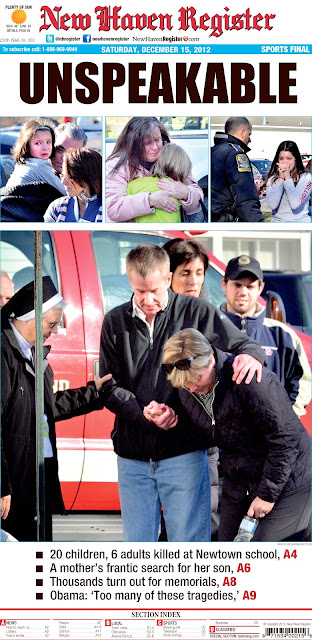Outing the gun owners
 There is much information available for the asking - licenses, tax liens, financial records, criminal records, housing data, police activity, health inspection records - the list goes on and on. At times, even mundane information can become significant - like when it turns out that a candidate for office has a criminal record, or maybe doesn't even live in the district they are trying to represent. And few would argue that highlighting restaurant inspection reports is an invasion of privacy - after all, we put a lot of trust in an unseen kitchen every time we go out to eat. This is really our only protection.
There is much information available for the asking - licenses, tax liens, financial records, criminal records, housing data, police activity, health inspection records - the list goes on and on. At times, even mundane information can become significant - like when it turns out that a candidate for office has a criminal record, or maybe doesn't even live in the district they are trying to represent. And few would argue that highlighting restaurant inspection reports is an invasion of privacy - after all, we put a lot of trust in an unseen kitchen every time we go out to eat. This is really our only protection.So in this spirit, last week the web site lohud.com (the online side of the Westchester, NY newspaper Journal News) published a map showing the location of all the gun owners in Westchester and Rockland counties, just north of New York City. It was tied to an article called 'The gun owner next door', and was designed to inform readers of the number of weapons legally registered in their neighborhoods. But more than just listing numbers, it also listed the names of each gun owner and their exact location, predictably causing much angst among privacy advocates and the gun owners themselves, who saw the map as a street guide for criminals intent on stealing their weapons.
Also predictably, the map started a debate within the media community as to whether this information - just because it is available - is appropriate for publication. One blogger went as far as to 'out' personal - but publicly-available - information of members of the newspaper staff including their home addresses.
Though some might see this debate over gun rights, I believe it is really about information control - what is fair, what is responsible, and what is useful vs. the right to 'privacy among the masses' - that is to say the right to live your life without intimidation or unwarranted scrutiny. Few would argue that general statistics on gun ownership in specific suburban neighborhoods would be good information in the wake of the Newtown school shooting, but what does the house-by-house map actually accomplish? What is the context of this information? Are we supposed to feel more or less safe knowing the exact location of every legal weapon in our neighborhoods? Will every person on that map suddenly come under a cloud of suspicion for doing the right thing and registering their weapons? Is that fair?
The publication of this map left many of these questions open. Stay tuned for the backlash.
1/2/2013 UPDATE: The backlash
1/4/2013 UPDATE: Officials fight back on pistol permit data request
1/7/2013 UPDATE: Newspaper staff threatened over map
 RSS
RSS
















